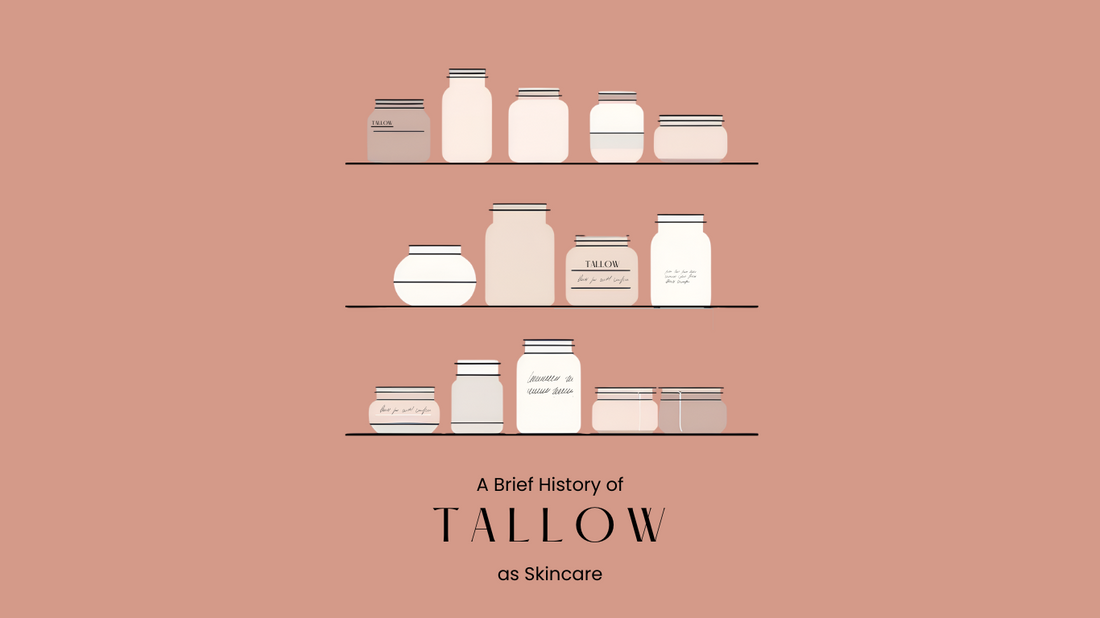
A Brief History of Tallow as Skincare
Long before modern lotions and lab-made creams, people turned to animal fats—especially tallow—as trusted skincare. For centuries, tallow was a staple in households across Europe, North America, and beyond. Women handcrafted salves and balms using rendered beef or sheep fat to soothe dry, cracked skin, heal wounds, and protect against the elements.
What made it so effective then is what makes it powerful now:
- It closely resembles the oils our skin naturally produces.
- It’s packed with fat-soluble vitamins like A, D, E, and K.
- It absorbs easily, delivering deep moisture without clogging pores.
A Deeper Look Into History
Tallow-based skincare wasn’t just a rural tradition—it was a practical, time-honored solution rooted in ancient knowledge. Roman physicians wrote about animal fats as wound treatments. In traditional European herbalism, tallow was used as a base for salves infused with healing plants like calendula, comfrey, and chamomile.
During colonial times and the American frontier era, women rendered tallow over open fires, often in small batches, adding beeswax or herbs from their gardens. It was used not just for skincare, but also for lanterns, soap making, and leather care—a true household essential.
Across many cultures, animal fat was seen as life-giving and protective—something to be respected, not wasted.
Why It Worked Then—and Still Does
Tallow is uniquely compatible with human skin. That’s because it’s rich in:
- Stearic and oleic acids, which help strengthen the skin barrier and soften rough patches
- Vitamins A & K, which support cellular repair and collagen production
- Vitamin D, known to help soothe inflammation and promote healing
- Vitamin E, a powerful antioxidant that helps defend against environmental damage
Because tallow’s structure is so similar to human sebum, your skin knows how to use it. It doesn’t just sit on top—it soaks in, nourishing and protecting at a deeper level.
The Fall of Tallow (and the Rise of Synthetics)
With the industrialization of beauty in the 20th century, animal fats fell out of favor. Petroleum byproducts, lab-created emollients, and synthetic fragrances flooded the market—faster and cheaper to produce, with a longer shelf life.
But along with that convenience came a new wave of skin issues: sensitivities, chronic dryness, and mystery rashes tied to the long list of unpronounceable ingredients.
The skincare industry had moved away from nature—and many people’s skin was paying the price.
The Comeback of Ancestral Skincare
Today, as more people seek to simplify, detox, and return to whole, nourishing ingredients, tallow is making a comeback. Not as a trend, but as a time-tested tool—trusted for generations, now rediscovered by those who want real results from real ingredients.
Why We Use It at Alpine Gold
At Alpine Gold, we’re proud to carry on this tradition—using only certified organic, grass-fed and finished beef tallow from animals raised with care and respect. Our tallow is rendered gently to preserve its rich nutrient profile, then blended with:
- Cold-pressed organic olive oil for added moisture and antioxidants
- Pure beeswax for skin protection and texture (in the lip balm)
- Therapeutic-grade essential oils (or none at all) for scent and support
We don’t add fillers, preservatives, or anything your skin doesn’t need. Just simple, effective ingredients—crafted the old-fashioned way, because that still works best.
Final Thoughts
Tallow isn’t just an ingredient. It’s a piece of history, a nod to ancestral wisdom, and a powerful reminder that the best skincare doesn’t come from a lab—it comes from nature, tradition, and a commitment to simplicity.
